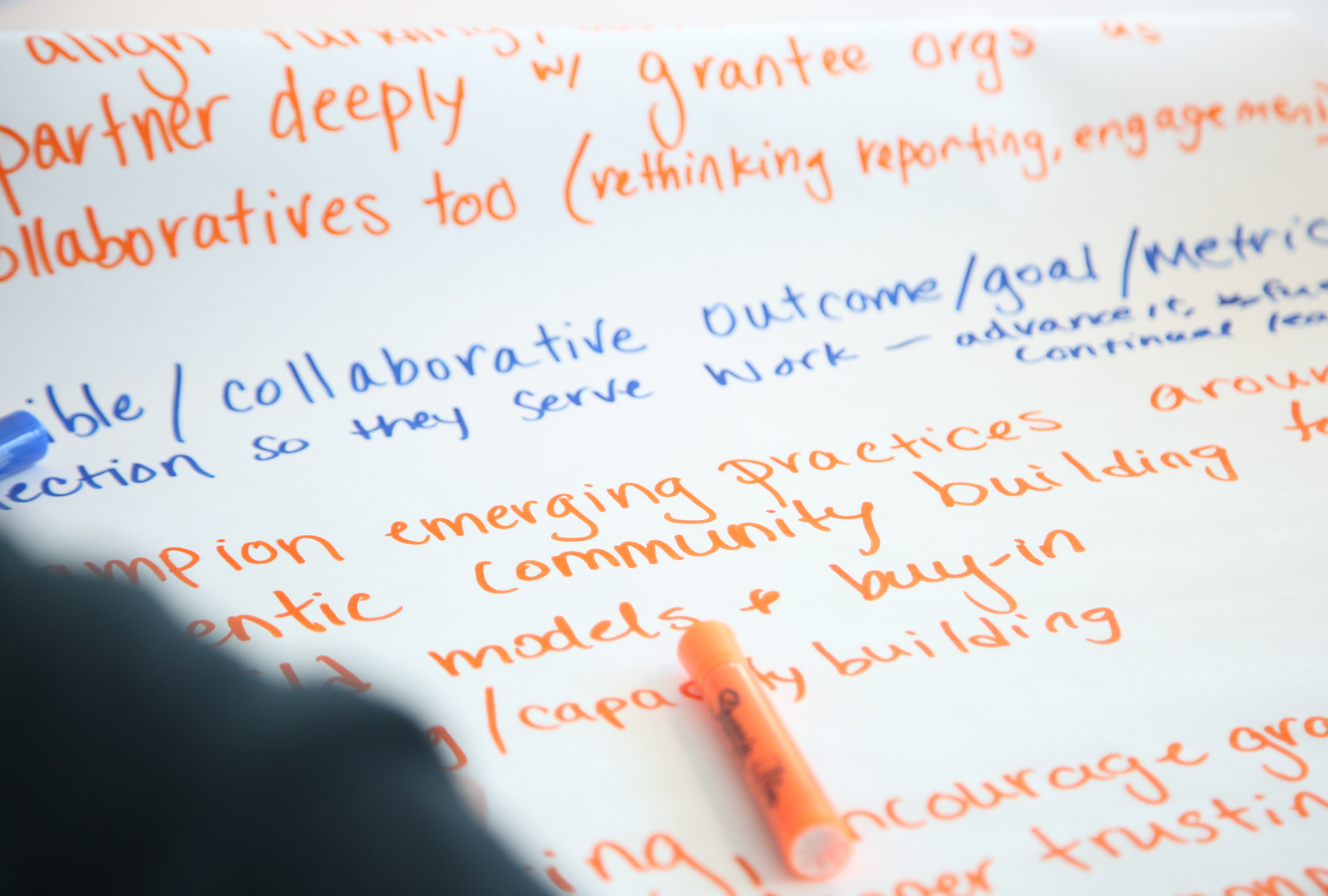Introduction
Research-practice partnerships (RPPs) involve long-term partnerships aimed at improving or transforming a wide-range of outcomes through collaboration and research inquiry across a diversity of partner groups. As RPPs proliferate, questions arise about how to best support them throughout their development and as they advance toward RPP-identified goals.
Yet, time and time again, we see that there is no “one-size-fits-all” solution that will effectively address a wide range of complex challenges. Rather than depend on a universal strategy, a more effective approach is one that is context-sensitive, adaptive, and focused on growth.
Over the course of a five-year-long project, together with a number of additional RPP colleagues, we at the National Network of Education Research-Practice Partnerships (NNERPP) and the National Center for Research in Policy and Practice (NCRPP) engaged over 300 members of 80 different educational RPPs to design, develop, and test tools to understand and support RPP effectiveness and health. This project resulted in an updated conceptual framework—along with accompanying tools, measures, and routines—that can support existing RPPs in their work together, as well as new RPPs planning for collaboration. By engaging with this collection of learning materials, members of the RPP ecosystem—including existing RPPs, those planning new RPPs, funders, teams researching RPPs, and others in education and beyond—will be better positioned to navigate their unique circumstances and achieve their local goals.
This post shares insights on using tools that are tailored to the specific needs, politics, and contexts of different RPPs in education settings, ensuring they are truly helpful and actionable in real-world settings.
Connecting to Shared Goals Across RPPs
The RPP Effectiveness Framework, developed by Henrick and colleagues in 2017, was a critical starting point to develop a shared understanding of the broad goals that RPPs share, and reflected the perspectives of a wide range of partnerships and RPP leaders of the time. Given the framework’s broad appeal and usefulness for supporting RPP teams to assess their partnership efforts, we sought to update this framework to reflect the growing diversity of RPPs that exist today.
While retaining the structure of the 2017 version with five key dimensions representing RPP goals and broad indicators of progress, the revised RPP Health and Effectiveness Framework introduces significant changes based on recent research. For one, there is a heightened focus on equity, voice, privilege, and power across all dimensions, emphasizing the inclusion of students, families, and communities within partnership work. The framework now accommodates a broader range of RPPs with varying goals and structures, and shifts from fixed roles like “researcher” and “practitioner” to more fluid roles that encompass research, practice, policy, and community perspectives.
Overall, the updated framework reflects the perspective of RPP participants from a diverse set of partnerships and can serve as a guide for what RPPs might strive to achieve together. Although each RPP is a unique reflection of the partners, goals, and contexts they are situated in, this framework offers flexibility for partnerships to identify the dimensions of the work most important to them.
Finding the Right Entry Point for Your RPP
With five dimensions and dozens of indicators for assessing effectiveness in the updated framework, we heard during the co-design process that it may be hard to know where to start. In our research and design, we saw there were multiple ways to focus attention and thinking on the broad topic of “RPP effectiveness,” and different RPPs may need different starting points based on their needs, current conditions, or familiarity with the framework.
Five dimensions of RPP health and effectiveness:
- Cultivate Trust and Relationships
- Engage in Inclusive Research or Inquiry to Address Local Needs
- Support Practice or Community Organization in Making Progress on its Goals
- Engage with the Broader Field to Improve Educational Practices, Systems, and Inquiry
- Foster Ongoing Learning and Develop Infrastructure for Partnering
For instance, newer RPPs might start by reviewing all dimensions and doing an initial inventory of how the dimensions are currently playing out in their partnership. Another RPP may want some or all of its members to use a “screener survey” to determine how to focus their efforts. RPPs with prior experience in specific dimensions may revisit those areas to assess progress and reflect on their work. Or, a funder or convener of RPPs could survey its members to identify areas of focus for within and cross-partnership dialogue. In any of these cases, identifying the right place to start should be meaningful and connected to the RPP’s own goals and most pressing issues of concern.
Engaging with Tools that are Adaptable and Responsive
A central aim of our work is to support opportunities for RPP members to reflect on their joint goals, surface and engage diverse perspectives in their teams, and identify possible next actions to drive change and improvement. After identifying a focal area, an RPP can turn to the RPP Health and Effectiveness Toolkit to help bring to life these dimensions within the context of the RPPs’ work.
One key takeaway from the design and testing phases of this work was that we needed to plan for adaptation and flexibility in any tool put forward. Designing for use, then, meant developing a suite of tools that could be adjusted in different settings, with different “grain-sizes,” modes of engagement, and time commitments. The suite currently includes these tool types:
Discussion activities:
- 20-30 minute structured discussions specific to particular indicators
- Mini-routines: 5-minute routines specific to particular indicators that could be built into an existing routine, like a standing meeting
- Survey scales: 4-10 item validated survey scales aligned to indicators
- Reflection prompts: Prompts aligned to the indicators that could be used for interviews, discussions, or open-ended survey items
These tools can be combined in different ways to support RPP team learning around pressing partnership challenges. For instance, a partnership might start by administering a survey scale for a particular indicator and then discuss patterns that emerge from the results. That RPP might then opt to adapt one of the discussion questions as a repeating mini-routine within their meetings to support deeper thinking in this area. Another RPP may wish to adapt a 20-30 minute discussion activity related to a certain dimension to a shorter version so that their team can embed these types of conversations in their regular meeting routines.
What Comes Next?
We invite members of the RPP ecosystem to engage with the RPP Health and Effectiveness Framework and resources shared here. For individual RPPs, one next step might be to identify areas where the RPP could benefit from focused attention and how these adaptable tools could be integrated into regular practices. The framework and toolkit can also be a resource for networks of RPPs who are engaged in learning across partnerships or for evaluators who support RPPs’ improvement and learning efforts.
We at NNERPP and NCRPP welcome feedback from RPPs who engage with the framework and toolkit as we learn together if and how they meet the evolving needs of partnerships across diverse contexts.





